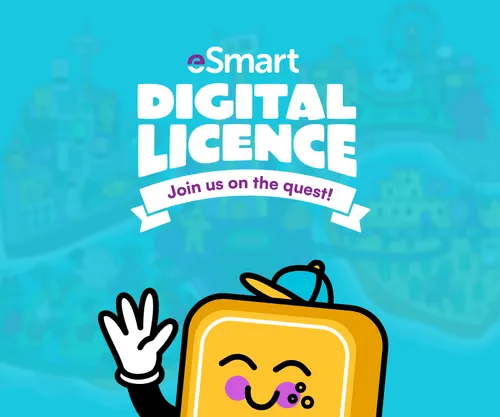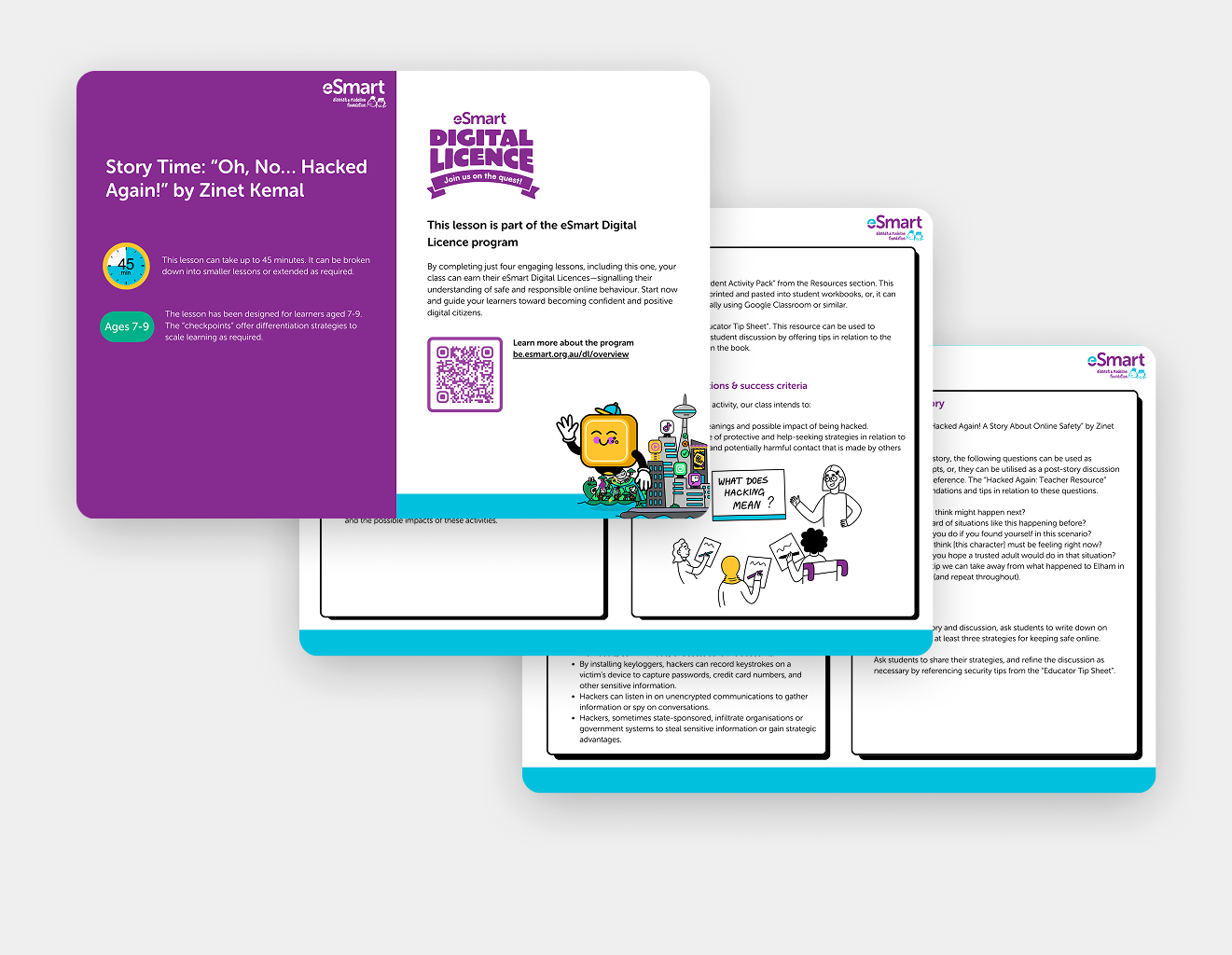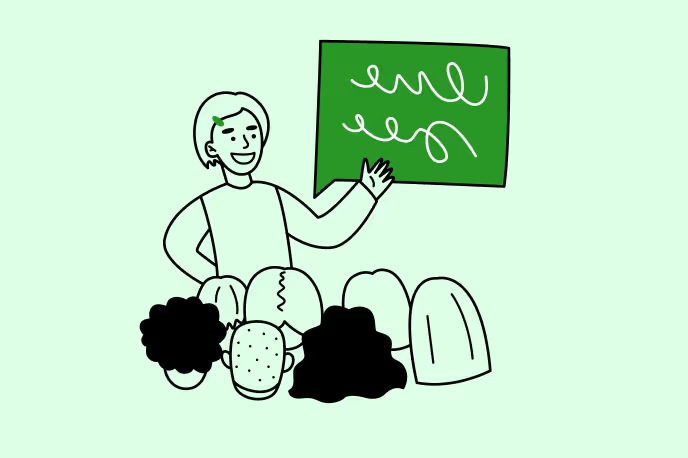Download Lesson Pack
Storytime: “Oh, No… Hacked Again!”

Child Safeguarding Statement
Some resources and activities may prompt a child to remember and potentially share an experience of harm. Make sure you’re familiar with your school's safeguarding policies and procedures so you can confidently report safety and well-being concerns.
Prepare students for the session by discussing: their right to be safe and respected; what to do if discussing online safety makes them feel uncomfortable or unsafe; and how to seek help if they feel or have felt unsafe. Use this resource available on the website.
Storytime: “Oh, No… Hacked Again!”
This activity is relevant for students engaging in online activities such as gaming, social media, or messaging services, helping them identify when to seek support before sharing personal information, expanding their understanding of hacking and its impacts.
Lesson details
Contact
About this Risk Area
When potentially harmful contact is initiated by others online, including strangers who may pose risks such as exploitation or identity theft.
Example topics:
- Online privacy and security practices, including setting strong passwords and managing privacy settings.
- Recognising and responding to online threats, such as phishing scams and identity theft.
- Establishing boundaries for online interactions and understanding the risks of sharing personal information online.
- Seeking help and reporting inappropriate or harmful online behaviour to trusted adults or authorities.
The resources for this risk area support learning in relation to safe online communication, privacy settings, and establishing boundaries for interacting with others on the internet.
Note: This activity requires your class to have access to the book “Oh, No… Hacked Again! A Story About Online Safety” by Zinet Kemal. The story is recommended for ages 6-12. Check with your library, or, hardcover versions can be purchased via various stockists such as Booktopia.
In this story time activity, students explore a range of preventative measures that aim to protect against being hacked. “Oh, No… Hacked Again!” is a story about Elham, an eight-year-old girl who plays online games. While she loves playing online, Elham struggles with making safe decisions regarding her cyber security. Throughout the story, Elham leans on her mum and siblings to help stay safe while navigating online spaces.
Learning Intentions
By completing this activity, our class intends to:
- Discuss the meanings and possible impact of being hacked.
- Identify a range of protective and help-seeking strategies in relation to cyber security and potentially harmful contact that is made by others online.
Curriculum alignment
Australian Curriculum (Version 9.0)
The Australian Curriculum outlines the fundamental knowledge, comprehension, and abilities students are expected to acquire as they advance through the initial 11 years of schooling.
Years 3 and 4: General Capabilities
Managing online safety:
- Level 3: Report negative or harmful online behaviour by seeking help from trusted adults.
Year 3: English
- AC9E3LE02: Discuss connections between personal experiences and character experiences in literary texts and share personal preferences.
- AC9E3LE04: Discuss the effects of some literary devices used to enhance meaning and shape the reader’s reaction, including rhythm and onomatopoeia in poetry and prose.
- AC9E4LE02: Describe the effects of text structures and language features in literary texts when responding to and sharing opinions.
- AC9E4LE04: Examine the use of literary devices and deliberate word play in literary texts, including poetry, to shape meaning.
CASEL Framework
The CASEL Framework creates a foundation for applying evidence-based, Social and Emotional Learning (SEL) strategies both at school and in the broader community. Its aim is to support the cultivation of SEL skills and environments that advance students’ learning and development.
- Self-management: The abilities to manage one’s emotions, thoughts, and behaviours effectively in different situations and to achieve goals and aspirations.
- Responsible decision-making: The abilities to make caring and constructive choices about personal behaviour and social interactions across diverse situations.
My Time, Our Place – Framework for School Age Care in Australia
The aim of My Time, Our Place: Framework for School Age Care in Australia (the Framework) is to assist educators to provide children and young people with opportunities to maximise their potential and develop a foundation for successful lifelong learning. The Framework has been designed for use by approved providers and school age care educators working in partnership with children and young people, their families and the community, including schools.
Outcome 2: Children and young people are connected with and contribute to their world.
Children and young people develop a sense of belonging to groups and communities and an understanding of the reciprocal rights and responsibilities necessary as active and informed citizens.
This is evident when children:
- Understand the concept that while digital technology can connect us, it is also vitally important to maintain our face-to-face and interpersonal connections too.







